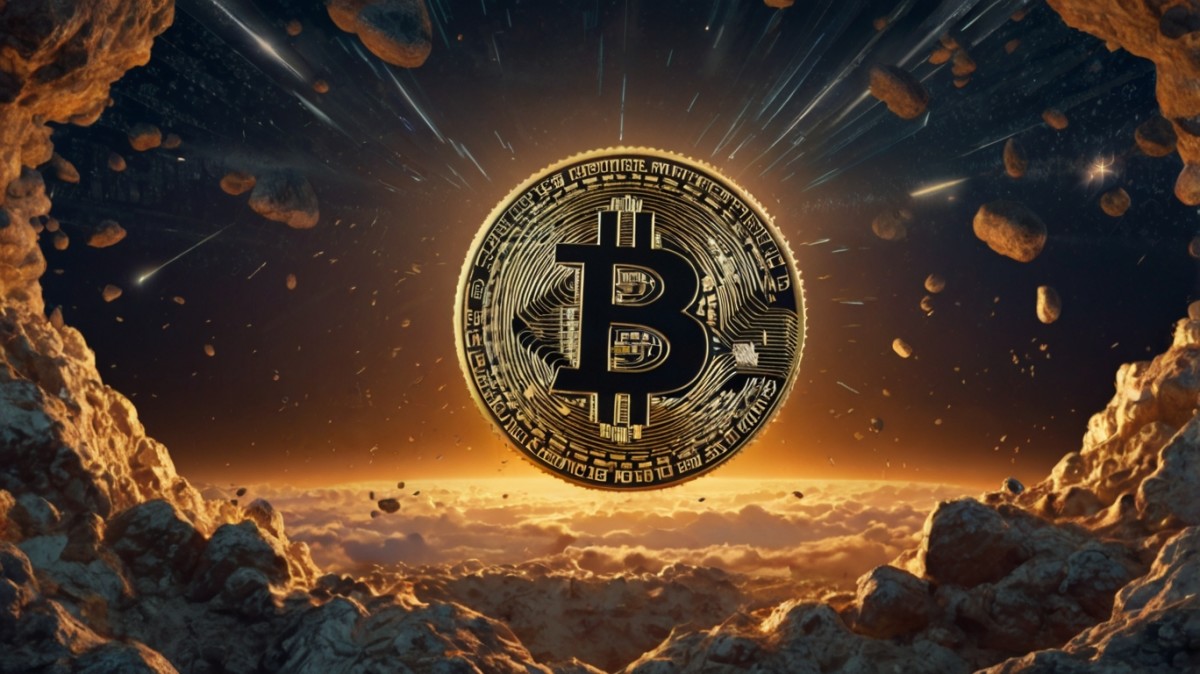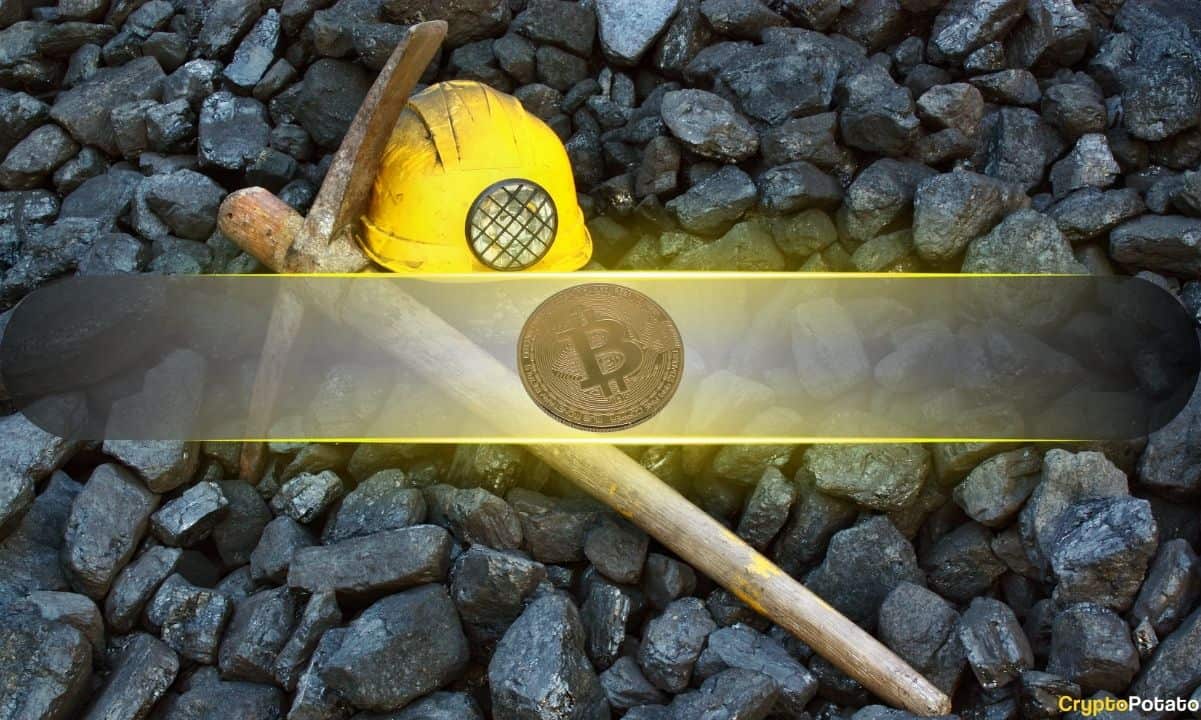What does hyperbitcoinization look like?


HyperBitcoinization is the belief that eventually all goods and services will be priced in Bitcoin instead of dollars. If you are a Bitcoin maximalist, you may have already taken this for granted. But what does this process actually look like over time? What are the key milestones that could indicate that hyperbitcoinization is underway? In this post, we look at current Bitcoin financial products, the geopolitical reasons why governments are adopting Bitcoin, why central banks are adopting Bitcoin, and more.
Combination of Bitcoin and traditional finance
As adoption continues, more companies will offer Bitcoin financial products and integrate Bitcoin into the traditional financial world. Unchained is a company at the forefront of this world, providing financial products such as Bitcoin-backed USD loans, Bitcoin inheritance, and tax-advantaged retirement accounts. Unchained is also helping people use these products in a safe, self-sovereign manner. This means incentivizing key ownership, joint multi-sig storage, and building a “key network”.
Meanwhile, there is a life insurance company that denomines premiums and payouts in Bitcoin, backed by Sam Altman, who provides insight into the future of Bitcoin denominations. Although the value of Bitcoin is volatile in the short term, we can safely assume that it will beat inflation in the long term. How much purchasing power do you think $300,000 will have in the future compared to 5 Bitcoin? What would you want your loved one to receive when you pass away unexpectedly?
I expect that financial products denominating payouts in BTC will initially be launched in the long term. As Bitcoin adoption continues, liquidity will increase and price volatility will decrease. This will make financial institutions more comfortable creating products that pay with Bitcoin for shorter periods of time. This reminds me of how Austrian economists think about hardening and softening when it comes to saving and spending. Throughout history, gold, the harder money, was hoarded and used to pay larger sums, while silver and other soft currencies were used to settle everyday payments.
Maximize the efficiency of existing payment rails
Bitcoin will become increasingly integrated into payment infrastructure. There is countless amazing works on the Bitcoin infrastructure that I could mention, but I want to focus specifically on the infrastructure created by Synota. Synota is a company that uses the Lightning Network to reduce the friction of traditional payments between energy producers and consumers. Synota is currently focused on energy payments between miners and energy producers.
In the current payment infrastructure between energy consumers and suppliers, payments are made every 30 days or more. Energy suppliers take on credit risk in this system. Synota allows settlements to take place daily or weekly via the Lightning Network. The system converts Bitcoin to USD at the end of the process, ultimately paying USD to energy providers, but this is proof that Bitcoin Rails creates efficiencies in existing payment systems. I haven’t yet heard of an energy supplier accepting payments directly in Bitcoin, but Synota gives them the option to do so.
In Bitcoin, final settlements have not yet occurred, but the infrastructure exists in the background and will continue to proliferate.
geopolitical incentives
After Russia invaded Ukraine, $300 billion in Russian assets held in Western banks were frozen, and the Biden administration recently discussed using those assets to continue financing the war in Ukraine. Putting aside the morality of this conflict, it incentivizes countries to hold a larger portion of their assets in Bitcoin due to its non-seizable nature.
Another geopolitical factor to consider is that many countries use the U.S. dollar and government bonds not because they want to, but because they have to. Attempts to form a financial network without the U.S. dollar and government bonds suffer from lack of liquidity and price volatility. This makes it difficult to preserve value other than USD. As Bitcoin’s liquidity increases, it is expected that it will be used as collateral in the repo market, a market where financial institutions borrow USD, and will eventually be used for payments between non-Western countries.
Bitcoin has become so important that BRICS countries will form a mining alliance to protect themselves if Western countries force miners within their jurisdictions to censor transactions from certain addresses.
Strengthening central bank balance sheets
U.S. Treasury bonds are considered the safest assets internationally, but bank balance sheets have become unstable due to the recent increase in Treasury bond interest rates due to monetary policy decisions in response to COVID-19. Silicon Valley Bank (SVB) went bankrupt while holding low-interest government bonds. The bank ran into trouble when depositors realized that SVB’s assets no longer matched its liabilities. US Treasuries made SVB vulnerable.
Bitcoin will eventually be recognized as an asset that strengthens balance sheets. Market volatility has increased since 1971, when the U.S. dollar completely broke its ties to gold. Bitcoin will be used as an asset to strengthen balance sheets, and the proportion of Bitcoin held by companies, financial institutions, and even central banks will continue to increase.
Bitcoin, world reserve currency and sovereign private
At some point, some factions in the United States will see Bitcoin as a threat to Western finance and the dollar’s reserve currency status. These forces attempt to punish Bitcoin holders through high taxes, self-custody restrictions, etc. Ultimately, that power will collapse due to capital flight. Bitcoin-friendly jurisdictions will benefit from the influx of wealthy individuals and their economies will prosper.
Texas is a good example of this. Texas became a Bitcoin mining powerhouse by deregulating its energy grid in 2002, achieving some of the lowest energy prices in the country. Miners left China and New York to operate in Texas, which is now one of the world’s leading mining centers. High state capital gains taxes in New York and California also punish wealthy individuals, further encouraging them to move to places like Texas, where the state capital gains tax is zero.
These types of areas accumulate capital, talent, and power. These incentives will also play out on the world stage. We expect Bitcoin-friendly countries like El Salvador to thrive. Adopt Bitcoin and experience abundance and growth. Fight back and experience capital flight.
Is everything priced in BTC?
At the very least, I expect central bank currencies to be backed by Bitcoin, which I think will have a positive impact on ordinary people simply by limiting the wild credit swings that often occur in fiat economies. In a future where “everything is priced in Bitcoin,” an important factor will be how likely it is for people to access Bitcoin directly without a third party. If you truly believe that Bitcoin will see mass adoption, transaction fees will skyrocket and it will make no sense to trade in layer 1 Bitcoin if the transaction value is less than tens of thousands of dollars.
Will people be holding Bitcoin or will they be holding Bitcoin IOUs? Although we can’t say for sure, we can’t rule out efforts being made on the Bitcoin development scene. I conclude this post by explaining how I think groups will react to Bitcoin as they pursue their own interests, but there is an altruistic side to adoption. The ultimate
Organizations, companies and individuals such as Fedi, Lightning and Nostr developers, Start9 and others are acting in the spirit of Satoshi to create a finite, censorship-resistant peer-to-peer currency for all. If we end up living in a world where everything is priced in Bitcoin, it will be because altruists have developed the technology to transact cheaply with Bitcoin in an autonomous way.
This is a guest post by Julian Martinez. The opinions expressed are solely personal and do not necessarily reflect the opinions of BTC Inc or Bitcoin Magazine.



